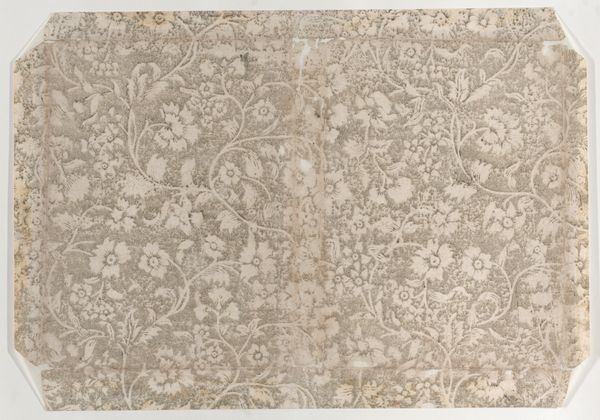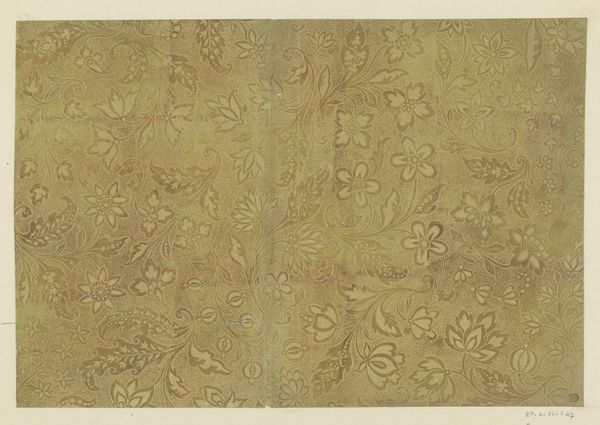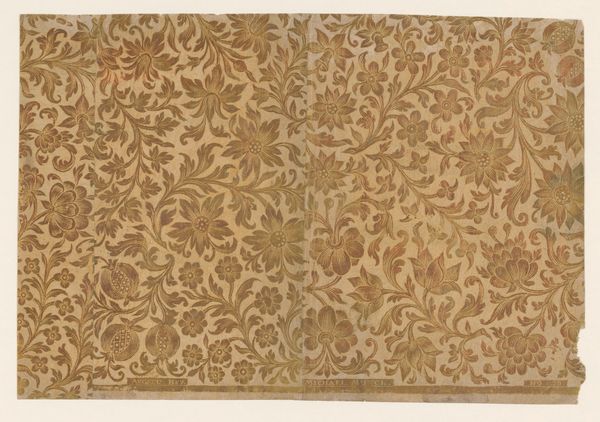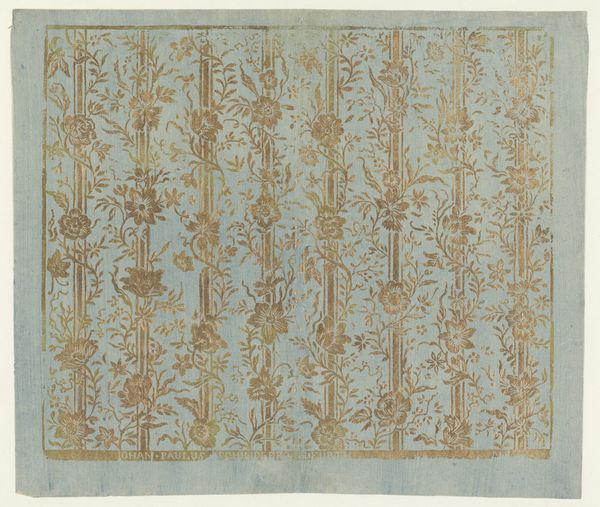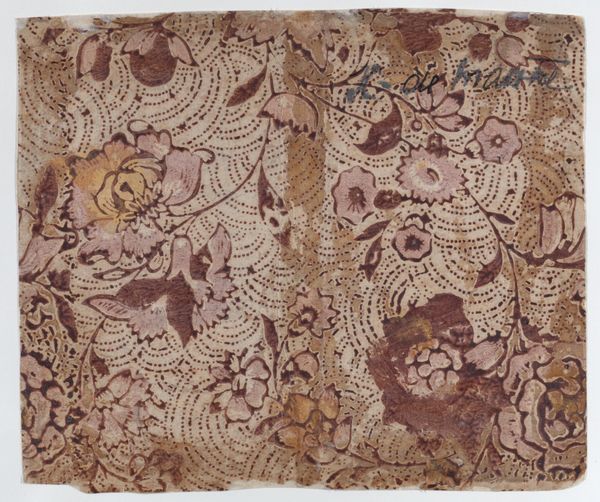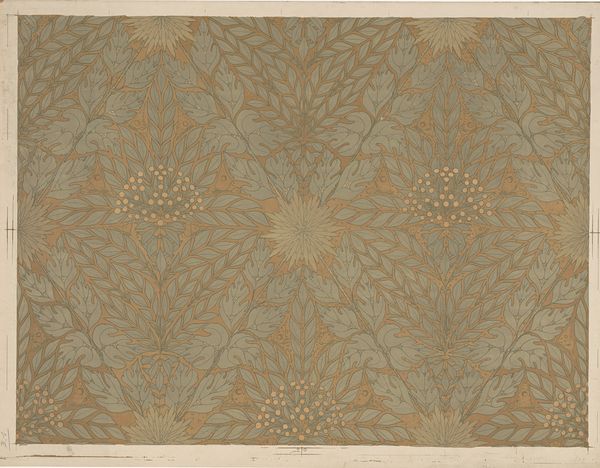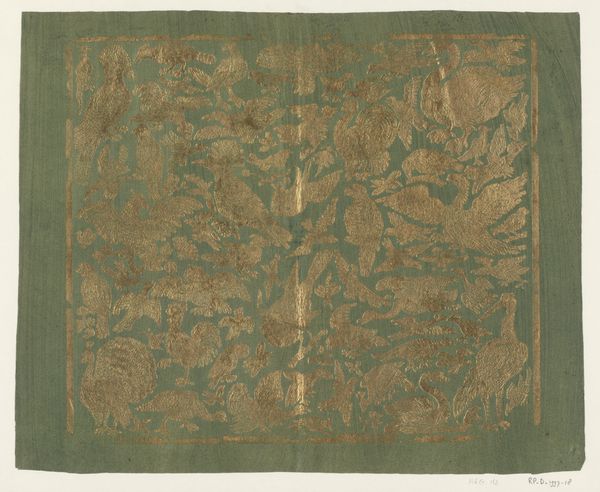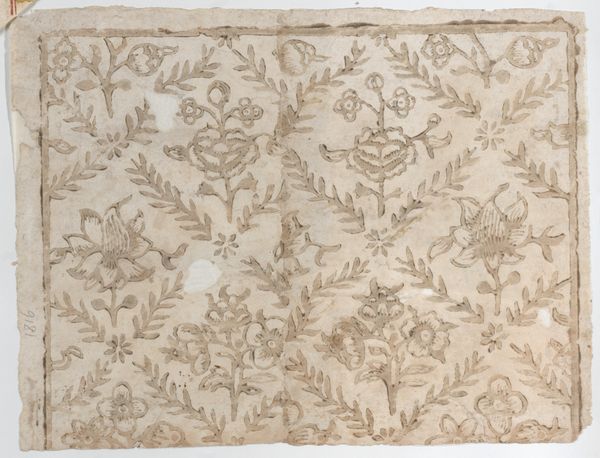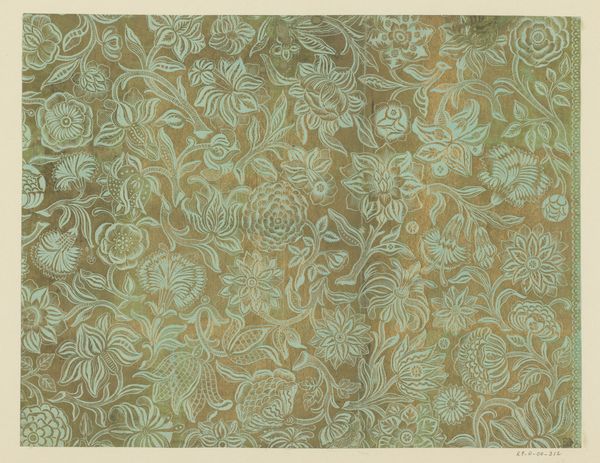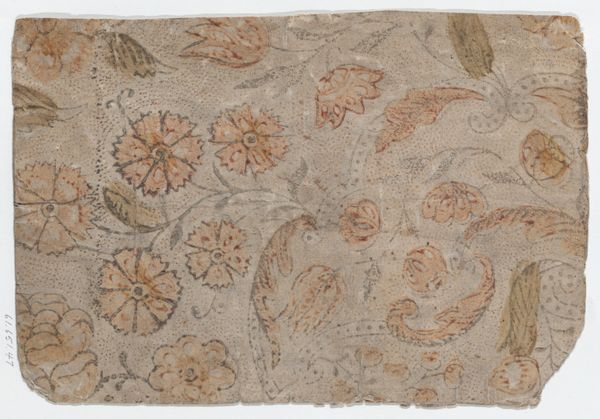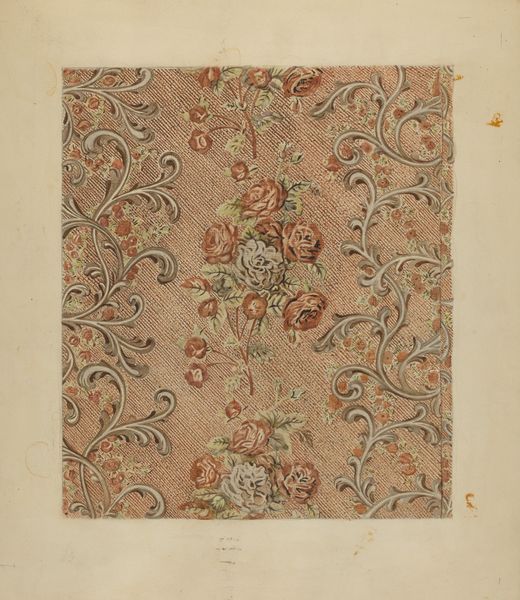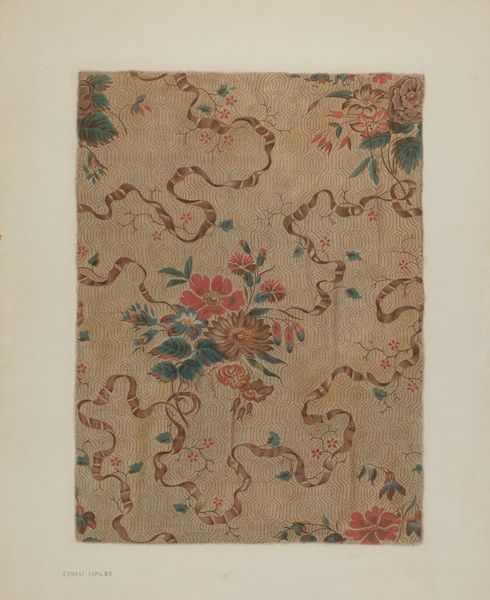
drawing, paper
#
drawing
#
natural stone pattern
#
naturalistic pattern
#
paper
#
pattern background
#
organic pattern
#
vertical pattern
#
pattern repetition
#
textile design
#
imprinted textile
#
layered pattern
#
pattern work
Dimensions: height 231 mm, width 405 mm
Copyright: Rijks Museum: Open Domain
Editor: So this drawing, "Blad met ranken met bloemen en vruchten en sierkader," from between 1720 and 1750, features this ornate floral design, possibly intended for textile production. It looks so delicate. How should we think about a piece like this? Curator: This drawing really brings to the foreground the question of production itself. It’s on paper, so we can appreciate its medium and the technique used to make such a detailed design. But it isn't "the thing itself," it is more a medium for production. Is it “high art”, or part of a process intended to be industrial? What's interesting to you about it? Editor: I hadn’t thought about its purpose in a factory context. The "textile" tag makes a lot more sense now, and it definitely affects my understanding of its place in the art world. The materials here are humble, but meant to guide other material processes? Curator: Precisely. The drawing is in service of the textile to come. The labor involved in the creation of this design also raises questions about craft and mass production. A person had to create this and then likely supervise its mechanical reproduction en masse, blurring the lines between artisanal creation and manufacturing, no? Editor: It does. That tension makes the piece much more complex, even though it looks rather pretty and simple at first glance. Curator: Right, we're forced to consider what it is. Do we appreciate its artistic merit in a traditional sense? Or do we see its beauty as part of a larger economic process that used aesthetics to generate production and consumption? Editor: That makes me wonder about the role of design and the perceived value of different forms of labor back then. Now, I'm also thinking of William Morris's critiques about industrialisation. I hadn't expected that! Curator: And now the drawing has sprung into life. Its social life, so to speak. Considering art from a materialist perspective has taken us beyond simply what we see in front of us, and now you are actively reconsidering history and material processes.
Comments
No comments
Be the first to comment and join the conversation on the ultimate creative platform.
